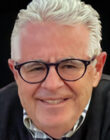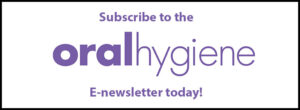
Treating children, not teeth
If toothbrushing is not rocket science, how come it is so difficult to do it effectively, as dental caries is the most common disease in the world? Why is it not effective in preventing tooth decay? You need to be able to answer your patient’s question: why do I still get tooth decay even though I brush my teeth? This should be addressed by asking, how often and regularly do you brush your teeth, and for how long? A toothbrush is not a magic wand and waving it around for 10 seconds in the mouth will not be very effective in preventing dental disease. To effectively get the patient onside, you need to explain and educate how and why brushing works. The purpose of a toothbrush is to effectively remove dental plaque from the teeth daily. The explanation starts by telling them that dental plaque builds up daily and must be removed daily. The explanation as to why you can get tooth decay even if you brush, is that the plaque when it first forms is soft and can be physically removed by effective tooth brushing.
However, if it is not removed daily, the plaque becomes more firmly attached to the tooth, and now simple brushing will not remove it and it will start to build up, which eventually leads to dental decay. Thus, daily brushing is important. What if you brush daily and still get tooth decay? This should be explained by how effective the brushing regime is. Do you methodically brush all the tooth surfaces, buccal and lingual, and do you brush hard enough to remove the dental plaque. Or do you brush too gently because you do not want to hurt the child. Thus, you can brush the teeth daily and still get tooth decay, if dental plaque is not removed. You must have a regime to brush the mouth, do it daily and firmly and cover all surfaces. Twice a day for infants and young children, but if tooth brushing becomes a “Battle Royale” as it can take two people to brush effectively, then doing it once a day may be adequate until compliance improves.
What is a good age to start brushing? The best time is at about 18 months of age, when most of the primary teeth have erupted or will be erupting soon. You should, of course, be cleaning the mouth even before this age. Once a day should be adequate, unless the child has Early Childhood Carries (ECC) or hypoplastic teeth. If the child has ECC or hypoplastic teeth, fluoride toothpaste may be necessary even at that age and should be dosed appropriately. So, how do you brush a toddler’s teeth? Sit on a chair, and have the child sit on your lap, facing you. Have your partner sitting on a chair facing you knee to knee, then flip the child down on your lap, and hold the child’s arms while your partner brushes the child’s teeth with an appropriate child’s toothbrush, that has soft bristles and a small head. Do not try to be fancy; use a back and forth scrubbing stroke. The child will likely be crying and struggling. Ignore this and continue, as you are not hurting the child. You should be brushing for about 30 seconds. For older preschoolers, you should let them brush themselves but finish off brushing properly for them. To brush effectively, stand up and have the child standing in front of you, facing away, and their body being supported by your body. Have them raise their chin and then scrub away. Trying to brush with the child facing you is ineffective, as there is no support for the head to brush firmly. Adjunct devices such as water pick, flossing, and mouthwash are not called for in preschoolers. Trying to floss the child’s teeth is pointless if you cannot brush adequately, unless there is stringy food caught between the teeth. Spending the time trying to floss in noncompliant children burns up time that could have been spent brushing.
After the initial oral hygiene appointment, you need to set up an appropriate recall appointment for 1-3-6 months, whichever is appropriate to the needs of the child. At the recall appointment, you can judge if the program you initiated is being effectively carried out. The simple way to do this is to check for gingivitis, which is a result of plaque build-up. You may also note that the gingiva bleeds on brushing, a sign of inadequate brushing. At this time, you need to explain that the gums are bleeding due to inflammation, and that the brushing is not painful, and does not cause bleeding in healthy gums. Many parents stop brushing when they see bleeding gums. You must reinforce them that they must brush firmly, and that the bleeding will stop in a few days if brushed properly. If they do not follow instructions, it will eventually lead to tooth decay. Plaque that does build up must be removed by a professional cleaning at the regular recall appointment. Since all people have some plaque and calculus build up, even if you brush well, you need to come for a periodic cleaning and assessment to maintain good oral health in the long run. Your job is thus not just to clean their teeth, but to motivate and coach them. A successful program is rewarded by the absence of tooth decay and a happy child at dental visits.
About the author

Dr. Jack Maltz is a Pediatric Dentist providing dental care to children in Brampton for over 40 years. Dr. Maltz is the former head of the OSPD and Head of the Brampton Civic Hospital Department of Dentistry.












